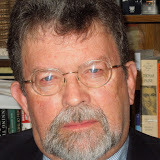On January 29th economic adviser Peter Navarro warned the National Security Council, BUT NOT THE COUNTRY, "that coronavirus could kill half a million Americans and deliver a $5.7tn hit to the economy." Nevertheless, on January 30th, Trump tweeted that there are "Only 5 people in U.S., all in good recovery." (Tom McCarthy, The Guardian, 14 April 2020). Then, on January 31st, Alex Azar, the head of Health and Human Services, declared a public health emergency.
That very same day, Trump announced his "China ban." Although a necessary first step, it proved to be quite insufficient. The "China ban" was "full of holes. It did not apply to immediate family members of American citizens and permanent residents returning from China, for example. In the two months after the policy went into place, almost 40,000 people arrived in the United States on direct flights from China" (David Leonhardt, "The Unique U. S. Failure to Control the Virus, New York Times, August 6, 2020).
"Even more important, the policy failed to take into account that the virus had spread well beyond China by early February. Later data would show that many infected people arriving in the United States came from Europe. (The Trump administration did not restrict travel from Europe until March and exempted Britain from that ban despite a high infection rate there.)" (Ibid.)
Mr. Leonhardt adds, "there is a good chance that a different version of Mr. Trump's restrictions - one with fewer holes and stronger quarantines - would have meaningfully slowed the virus's spread" (Ibid.).
Yet, before the flawed travel bans that he now touts as his signature achievements, the Trump administration had "withdrawn from several international partnerships and antagonized its allies. It has a seat on the WHO's executive board, but left that position empty for more than two years, only filling it this May, when the pandemic was in full swing. Since 2017, Trump has pulled more than 30 staffers out of the Centers for Disease Control and Prevention's office in China, who could have warned about the spreading coronavirus. Last July, he defunded an American epidemiologist embedded within China's CDC.
In 2018, he dismantled an office that had been assembled specifically to prepare for nascent pandemics. American intelligence agencies warned about the coronavirus threat in January" [2020], but Trump habitually disregards intelligence briefings." (Ed Young, "How the Pandemic Defeated America," The Atlantic, August 4, 2020).
On February 19th Trump predicted that the virus would go away in April, when the weather gets warmer. On February 23rd, however, Peter Navarro issued another internal memo in which he stated, "There is an increasing probability of a full-blown Covid-19 pandemic that could infect as many as 100 million Americans, with a loss of life of as many as 1-2 million souls" (Tom McCarthy, The Guardian, 14 April 2020).
Yet, on February 24th, Donald Trump tweeted more magical thinking: "The Coronavirus is very much under control in the USA. We are in contact with everyone and all relevant countries. CDC & World Health have been working hard and very smart. Stock Market starting to look very good to me!" On February 25th, economic adviser, Larry Kudlow echoed Trump by asserting the virus has been "contained" (Ibid.).
"On February 26, Trump asserted that cases were 'going to be down to close to zero.' Over the next two months, at least 1 million Americans were infected." (Ed Young, "How the Pandemic Defeated America," The Atlantic, August 4, 2020).
The coordinated talk by Trump and Kudlow gave Americans their first inkling of President Trump's priorities. He was willing to downplay the health risks to American citizens, in order to avoid spooking the stock market, which might undermine the economy and, thus, jeopardize his chances for reelection.
Next Page 1 | 2 | 3 | 4 | 5 | 6
(Note: You can view every article as one long page if you sign up as an Advocate Member, or higher).





